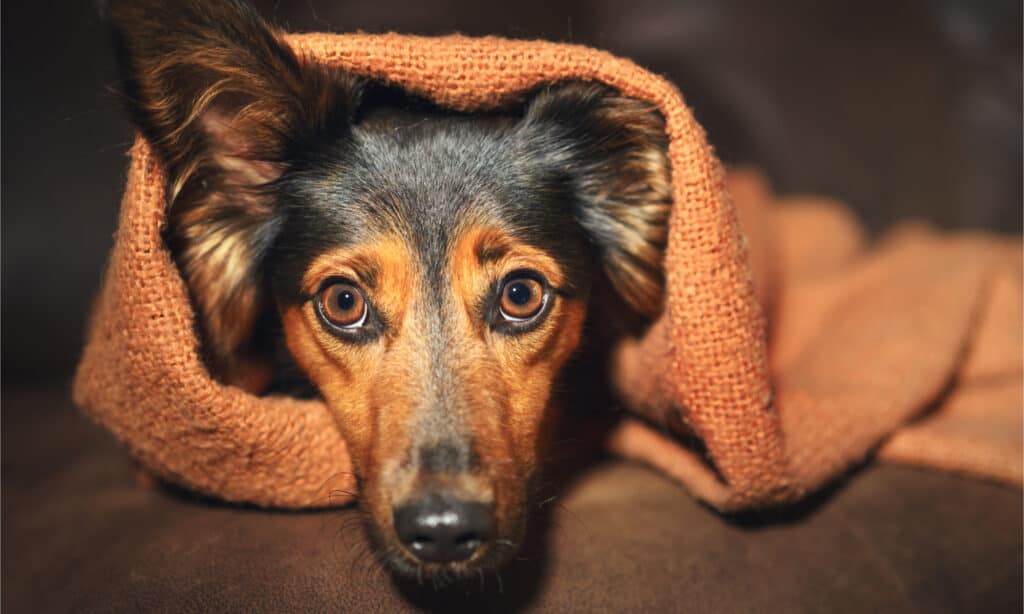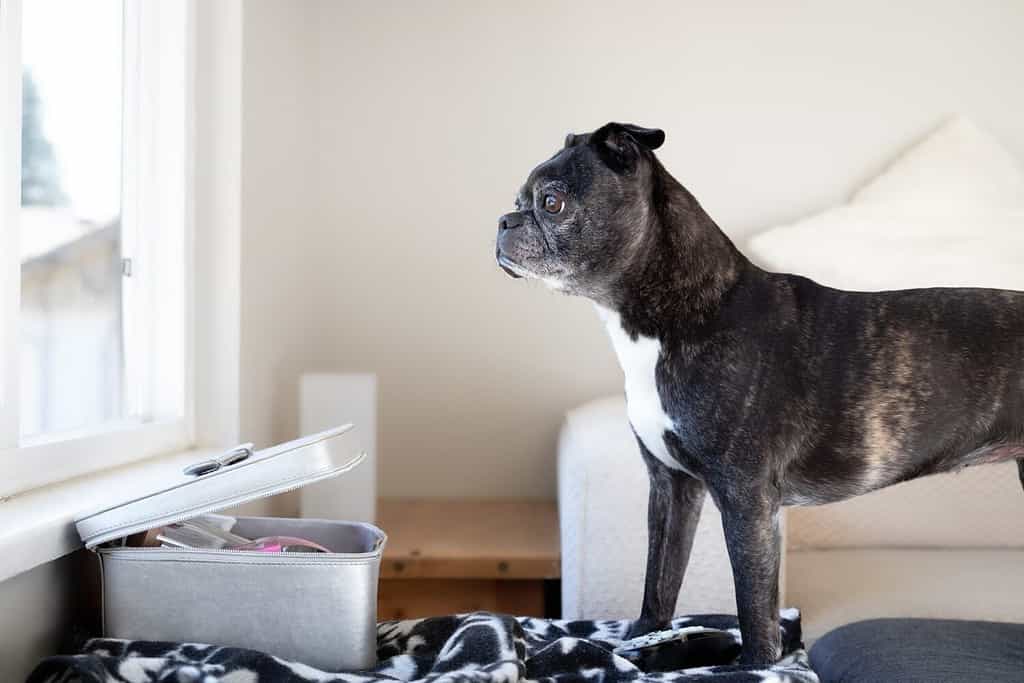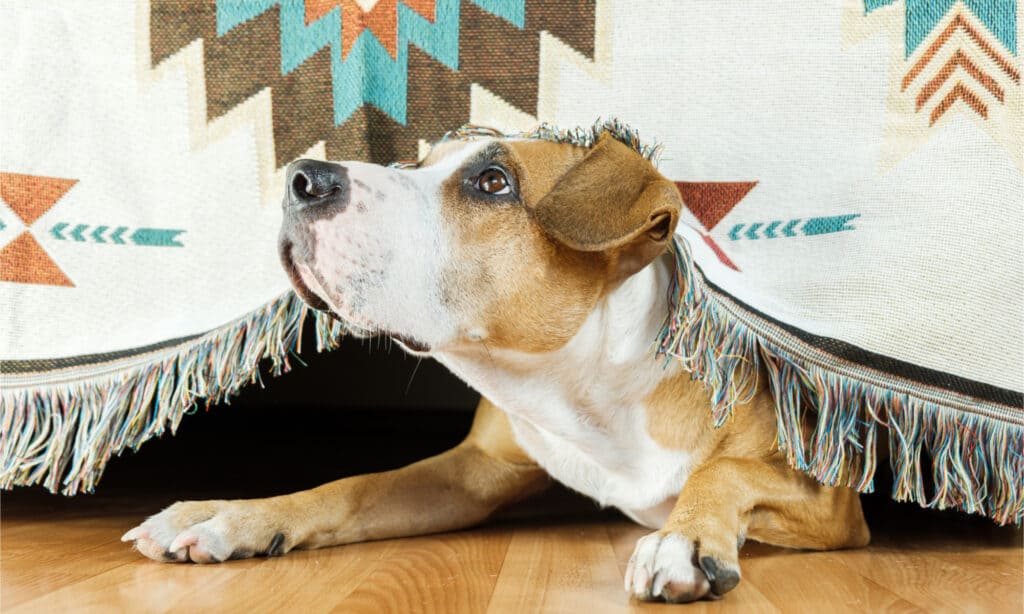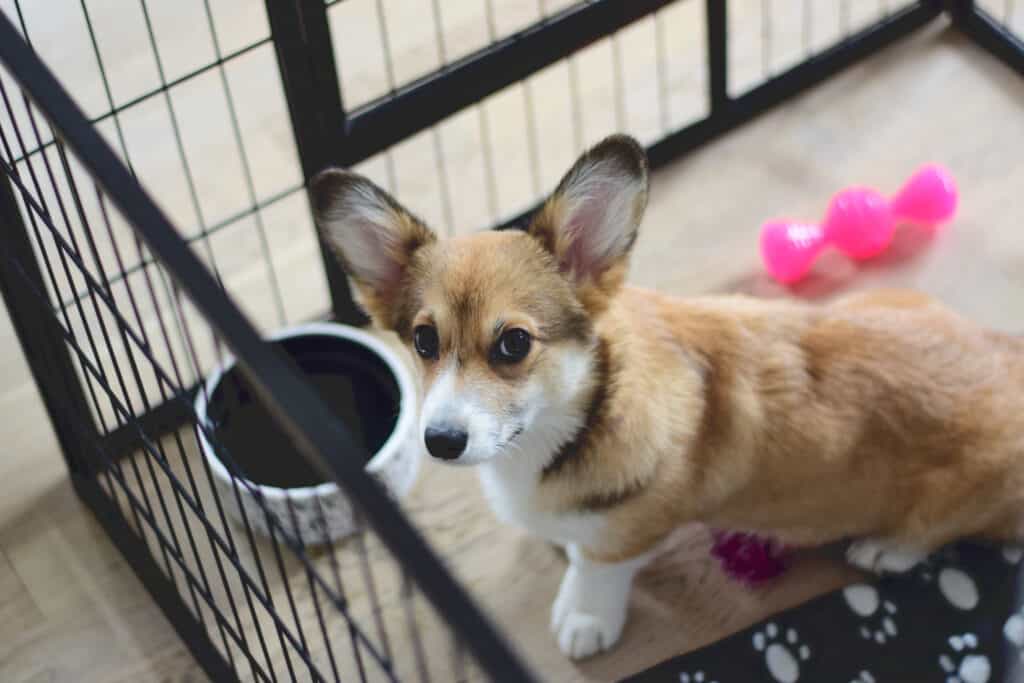Most dog owners are aware of the notorious “separation anxiety.” It can make ordinarily well-behaved dogs destroy the house and bark for hours. Some breeds are more likely to suffer from this condition than others, but all dogs can experience anxiety under the right conditions.
That said, most dog owners don’t know that there is another type of dog anxiety: isolation anxiety. While isolation anxiety can often look like separation anxiety, it can have different treatments and requires different training.
Therefore, you must know how to differentiate between these two types of anxiety and take the steps necessary to treat each one.
Understanding Isolation Anxiety in Dogs

A dog with isolation anxiety may be fine if with another dog; however, if left completely alone, your pup may act out.
©smrm1977/ via Getty Images
Isolation anxiety occurs when a dog is anxious when left alone. Often, the signs seem very similar to separation anxiety. However, they occur whenever the dog is completely alone – not necessarily just when the owner leaves.
Some dogs with isolation anxiety are completely fine if left alone with another canine. However, if they are alone in a room, they may become very loud, have accidents, and chew. Some dogs are even known to go through walls or doors!
Other common signs of isolation anxiety include pacing, excessive salvation, and various destructive behaviors.
Often, isolation anxiety is more likely to occur when a dog experiences a major life transition. Newly adopted dogs may not feel at home in their new home just yet, which can trigger anxiety when left alone. Dogs that had negative experiences in their early life, such as being separated from their mother too often, may be more likely to experience isolation anxiety, too.
Understanding Separation Anxiety

Isolation anxiety is thought to be more common than separation anxiety. However, many dogs are mistakenly diagnosed with the latter.
©Lindsay Helms/Shutterstock.com
Separation anxiety occurs when a dog panics when their owner or “person” leaves. It doesn’t matter if the dog is left with another person or other dogs. If their owner leaves the area, they become anxious. Dogs with full-blown separation anxiety often recognize the signs that their person is about to leave (such as them putting on shoes) and may become anxious even before their owner walks out the door.
Because this type of anxiety requires a bond, it usually develops over time. A dog that you just adopted won’t experience separation anxiety because they haven’t bonded closely with anyone yet.
Often, separation anxiety is harder to treat than isolation anxiety, though it can vary from dog to dog. Breeds that are prone to isolation anxiety are often also prone to separation anxiety.
There are many potential causes for this anxiety. In some cases, dogs that only form a bond with one person are more likely to experience separation anxiety, especially if that person doesn’t leave their side often. People-oriented breeds are also very prone to separation anxiety, as they form very strong bonds.
Dogs that have experienced previous abandonment are sometimes more prone to separation anxiety. However, they won’t show signs of anxiety until after forming a close bond with their owner (unlike isolation anxiety, which can happen as soon as the dog enters their new home).
The signs of separation anxiety are often very similar to isolation anxiety. The dog will often do destructive behaviors that they usually don’t do when you’re home, such as having accidents indoors, chewing, digging, and scratching. They may also bark or howl. Many will also attempt to escape, with destructive behaviors often being aimed at doors.
Isolation Anxiety vs. Separation Anxiety: How They Differ

Notice your dog’s behavior and whether they can stay with a friend without anxiety to determine if your dog has separation anxiety vs. isolation anxiety.
©sophiecat/Shutterstock.com
To make it clear, these two forms of anxiety differ primarily in why the dog becomes anxious. If a dog is anxious about being left alone, they have isolation anxiety. They will often be fine if left alone with another person or animal. If a dog is anxious when a particular person leaves, that’s separation anxiety. They’re anxious because they’re separated from their owner, not because they’re alone.
It’s easy to get these two types of anxiety confused. However, you can tell the difference by performing a few simple tests and observing your dog’s behavior.
Pay close attention to when your dog is anxious. When you leave your dog with a friend, are they okay, or do they get anxious? If you cannot leave your dog with a friend in your home without them becoming anxious, it’s likely separation anxiety. If your dog is fine staying with someone else, it may be isolation anxiety.
Dogs with separation anxiety will continue to feel anxious no matter who else is around. You could leave them with another human or pet, and they’d still get anxious when you leave.
If your dog has several owners, separation anxiety usually only occurs when one particular person leaves. The children of the household may come and go without making the dog anxious. However, when a very particular person leaves, a dog with separation anxiety will get anxious – even if everyone else is still at home.
A dog with isolation anxiety won’t feel anxious until everyone leaves. Each person could leave individually without the dog becoming anxious.
Dogs can also rarely develop separation anxiety in relation to another dog. They may be okay whenever their humans leave, but they may become very anxious if separated from their canine friend. This occurs most commonly with littermates and is a symptom of “littermate syndrome.”
Isolation Anxiety vs. Separation Anxiety: Treatment Differences

Anxiety treatments differ when it comes to isolation and separation anxiety.
©Aleksey Boyko/Shutterstock.com
The treatment of both isolation and separation anxiety depends on the severity of the dog’s condition. In minor cases, you can usually jump straight to training and other non-medication options. However, in moderate and severe cases, your dog may need to be medicated while training is implemented.
It’s important to understand that medication is only a band-aid. It does have side effects, especially when your dog is on them for a while. Therefore, medication is usually only recommended while the dog is being desensitized and trained.
Usually, treatment for both conditions includes gradual exposure. If your dog has separation anxiety, you’ll want to practice leaving your dog alone for very short periods of time. In extreme cases, you may only want to put your shoes on, especially if this “before leaving” step makes your dog very anxious.
Of course, this exposure will look different depending on whether your dog has isolation anxiety or separation anxiety. Either way, your goal is to slowly work up longer periods of time.
Crate training can be extremely helpful in both cases, as it teaches dogs to be alone in a comfortable space. Dogs that aren’t crate-trained tend to be more prone to anxiety, as they may have never learned to be alone comfortably.
Environmental enrichment can be helpful. Dogs that are hyperactive and bored may be more prone to anxiety. Exercise and mental stimulation can be helpful in this case. Try leaving your dog with puzzle feeders and taking them on a walk before leaving them for the day.
If you think your dog needs medication, you should speak to your vet. Often, this can help make living with your dog more practical while you work on eliminating their anxiety.
Managing Your Dog’s Anxiety

Crate training can be an effective way to treat both separation and isolation anxiety.
©Jus_Ol/Shutterstock.com
While you’re training and slowly desensitizing your dog, there are several ways to reduce your dog’s anxiety. These methods generally work equally well for isolation and separation anxiety, as they treat anxiety in general.
You may want to consider calming aids, such as anxiety wraps or pheromone diffusers. These usually have a slight effect and do not treat severe anxiety. However, they can be helpful for minor anxiety issues and maybe that extra oomph your dog needs to stay home alone.
Leaving items with your scent on them may help reduce separation anxiety in dogs. However, this often isn’t effective for isolation anxiety.
For dogs with separation anxiety, you should also avoid making your departures and arrivals overly emotional. Don’t pet your dog before you leave (or even look at them), and don’t pet them as soon as you walk in the door. This heightened emotion may only stress your dog out more.
For dogs with serious anxiety, you may want to invest in dog daycare until they are properly desensitized. This works best for dogs with isolation anxiety, as they likely won’t feel anxious when left with other caretakers. Dogs with separation anxiety will still get anxious, though, and not all doggie daycares may be prepared to deal with this.
Remember that progress is slow, and it’s important to remain patient and consistent. Managing your dog’s anxiety while working to reduce it can be stressful. However, it’s important because desensitization often takes months of hard work.
Ready to discover the top 10 cutest dog breeds in the entire world?
How about the fastest dogs, the largest dogs and those that are -- quite frankly -- just the kindest dogs on the planet? Each day, AZ Animals sends out lists just like this to our thousands of email subscribers. And the best part? It's FREE. Join today by entering your email below.
Thank you for reading! Have some feedback for us? Contact the AZ Animals editorial team.








